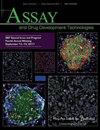氟比洛芬酯对斑马鱼胚胎的发育性心脏毒性和肝毒性。
IF 1.6
4区 医学
Q4 BIOCHEMICAL RESEARCH METHODS
引用次数: 1
摘要
氟比洛芬酯(FA)是一种非甾体靶向镇痛药,广泛应用于术后镇痛和癌症镇痛。在评估FA对成人的临床镇痛作用方面已经做了大量的工作。随着FA使用量的增加,胚胎发育中的潜在毒性和分子机制需要更好地了解。本文介绍了斑马鱼胚胎发育的多项指标来评价FA的毒性,为妊娠医学提供临床指导。我们进行了斑马鱼胚胎毒性(ZFET)测试,从受精后24小时(hpf)开始,将胚胎暴露于一系列浓度梯度的FA培养基中。在72、96和120 hpf时评估药物治疗的斑马鱼的死亡率、孵化率和畸形率。通过眼面积、体长和卵黄囊面积来评价FA致死浓度≤10%对胚胎发生的影响。A 0.5 μg/mL或更少的FA处理没有显示任何不良反应,但LC10 FA显著导致斑马鱼畸形。与对照组相比,在发育不良个体中发现了器官疾病,包括心率减慢、心包扩大和肝萎缩。TUNEL检测表明,FA在畸形胚胎中产生了凋亡细胞,且剂量的增加加剧了凋亡。定量实时聚合酶链反应显示,心脏发育相关转录因子、肝脏发育相关基因和细胞凋亡调控基因的表达异常。这些结果表明,ZFET可用于FA毒性试验,低致死剂量的FA对斑马鱼胚胎发生,尤其是胚胎癌变和肝发生有害。本文章由计算机程序翻译,如有差异,请以英文原文为准。
Developmental Cardiotoxicity and Hepatotoxicity of Flurbiprofen Axetil to Zebrafish Embryo.
Flurbiprofen axetil (FA) is a nonsteroidal targeted analgesic and widely used for postoperative analgesia and cancer analgesia. Extensive works have been done in the evaluation of FA's clinical analgesic effect on adults. Along with the increase of FA usage, the potential toxicity and molecular mechanism in embryo development need to be better understood. In this article, multiple embryonic development indexes of zebrafish were introduced to evaluate the FA toxicity to provide clinical guidance for gravidas medicine. We performed a zebrafish embryo toxicity (ZFET) test by exposing embryos to a series of concentration gradients of FA medium starting from 24 hours postfertilization (hpf). The mortality rate, hatching rate, and malformation rate of drug-treated zebrafish were assessed at 72, 96, and 120 hpf. Effects of ≤10% lethal concentration (LC10) of FA on embryogenesis were evaluated by eye area, body length, and yolk sac area. A 0.5 μg/mL or fewer FA treatment did not show any adverse effects, but the LC10 FA significantly caused zebrafish malformation. Organ disorders, including slow heart rate, enlarged pericardium, and liver atrophy, were found in the dysplasia individuals when compared with control. TUNEL assay suggested that apoptotic cells in malformation embryos were produced by FA and the increasing dosage exacerbated apoptosis. Quantitative real-time polymerase chain reaction revealed that expressions of cardiac development-associated transcription factors, liver development-related genes, and apoptosis regulating genes were aberrant. These results indicate that the ZFET can be applied in the FA toxicity test, and a low lethal dose of FA is harmful to zebrafish embryogenesis, especially in embryo carcinogenesis and hepatogenesis.
求助全文
通过发布文献求助,成功后即可免费获取论文全文。
去求助
来源期刊

Assay and drug development technologies
医学-生化研究方法
CiteScore
3.60
自引率
0.00%
发文量
33
审稿时长
>12 weeks
期刊介绍:
ASSAY and Drug Development Technologies provides access to novel techniques and robust tools that enable critical advances in early-stage screening. This research published in the Journal leads to important therapeutics and platforms for drug discovery and development. This reputable peer-reviewed journal features original papers application-oriented technology reviews, topical issues on novel and burgeoning areas of research, and reports in methodology and technology application.
ASSAY and Drug Development Technologies coverage includes:
-Assay design, target development, and high-throughput technologies-
Hit to Lead optimization and medicinal chemistry through preclinical candidate selection-
Lab automation, sample management, bioinformatics, data mining, virtual screening, and data analysis-
Approaches to assays configured for gene families, inherited, and infectious diseases-
Assays and strategies for adapting model organisms to drug discovery-
The use of stem cells as models of disease-
Translation of phenotypic outputs to target identification-
Exploration and mechanistic studies of the technical basis for assay and screening artifacts
 求助内容:
求助内容: 应助结果提醒方式:
应助结果提醒方式:


